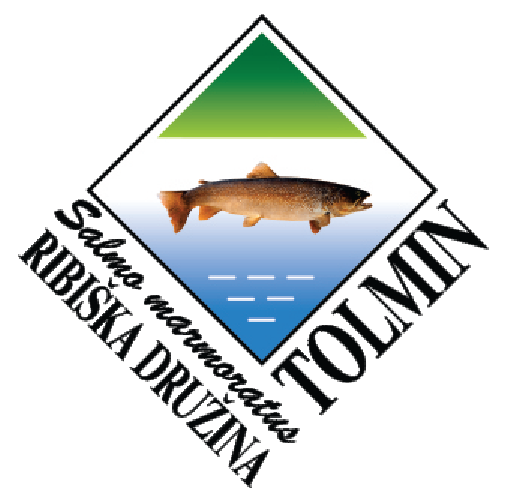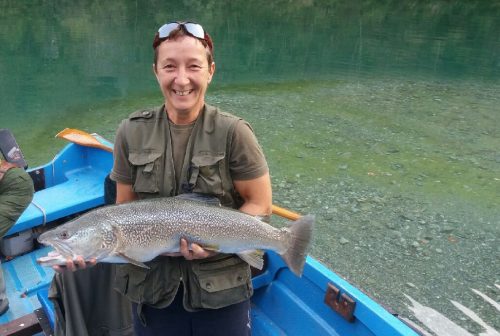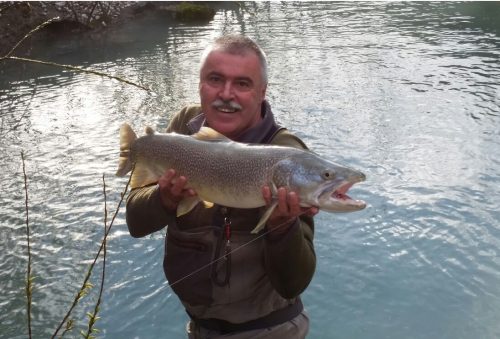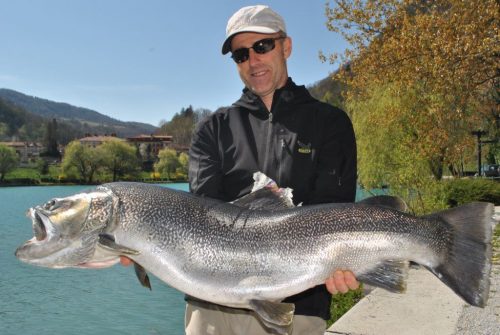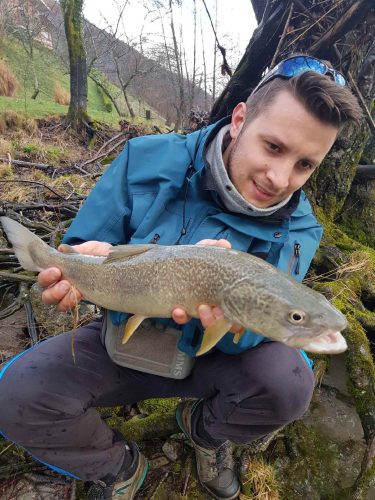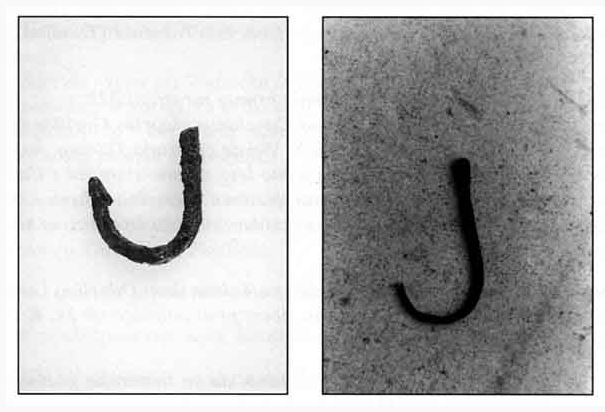TROPHY CATCHES
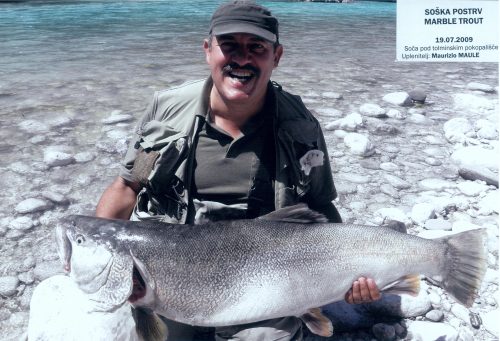
The largest marble trout ever was caught by an Italian journalist from Milan, Maurizio Maule. He got lucky on 19 July 2009 when he pulled a monster out of the water, measuring 120 cm in length, and weighing 22.5 kg.
This record fish lived in the Soča below the Tolmin cemetery for a good ten years. Considering its size, the fish was relatively young. Because it was sterile, it hadn’t lost its energy on reproduction. This beauty from the Soča was also a big challenge for Mr Toni Strgar, a taxidermist from Bled. Mr Lucijan Rejec, the then chairman of RD Tolmin, pointed out that no written records of a marble trout weighing more than 16 kg and caught by flyfishing had existed until then.
This was, however, the second largest marble trout every caught in this area. A couple of years ago, a dead fish, which was a centimetre longer and weighed 2.5 kg more, was found in the lake at Most na Soči.

